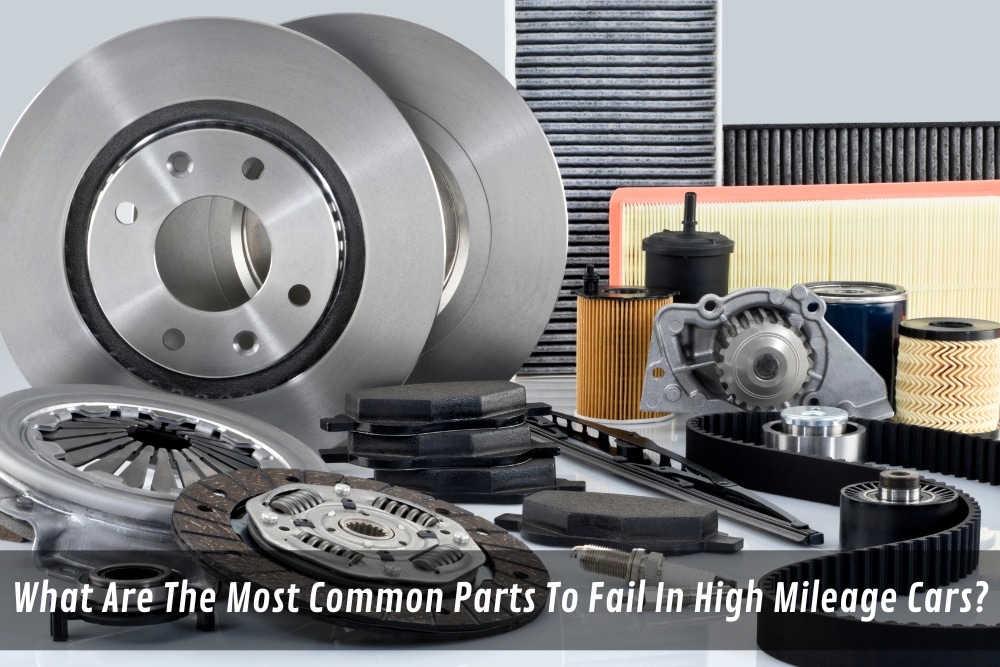Are you in need of high mileage car maintenance as the proud owner of such vehicles? Or are you considering purchasing one but uncertain about which parts may fail initially?
High-mileage cars come with plenty of advantages such as lower cost, and better fuel efficiency, and have stood the test of time. But they come with their own set of challenges too, such as potential mechanical issues that cost both time and money.
With an understanding of common parts that may fail on a high-mileage car, you can help ensure that your next car purchase is wise. This article will help you identify some of the most common parts of failure, so you can be more knowledgeable before making a decision. Through this knowledge, you will be able to make an informed decision when maintaining or buying a car.
What are the pros and cons of using high-mileage cars?
The pros of owning a high-mileage car include lower cost, better fuel efficiency, and the assurance that it has already withstood the test of time. However, there are some cons to be aware of as well. High mileage car maintenance can be more expensive than on a newer car due to a higher likelihood of wear and tear on parts. Additionally, you may find yourself having to replace certain components sooner than expected.
What parts normally fail on high-mileage cars?
When it comes to high-mileage cars, timing belts are one of the most common parts to fail. The wear and tear caused by mileage can cause these belts to stretch and break down over time, leading to engine failure. It’s important to check your car’s manual for its specific recommended replacement intervals, but typically they should be replaced at least every 60,000 miles.
Brake pads are also another part that can easily wear down over time. Brake pads help stop your car when you press the brake pedal, so it’s important that they stay in good condition. As with any other component of a car, the more miles you drive on them increases the chances of malfunction or complete failure. It’s recommended that you replace your brake pads at least every 100,000 miles, or sooner if necessary.
In addition, one of the most remarkable high-mileage cars is Irv Gordon’s 1966 Volvo P1800. After putting over the 1.3 million miles mark on his original engine, he has been recognised by Guinness World Records as the holder of the highest mileage car in the world. While it’s rare for a car to make it that far without any major issues, Irv did experience some parts failures throughout his journey. These included a transmission failure at 200,000 miles and a water pump failure at 500,000 miles on the odometer.
What signs should you look out for when driving a high-mileage car?
When driving a higher-mileage car, it is important to be aware of any signs or symptoms of potentially failing parts.
- It’s recommended that you pay attention to the check engine light on Hyundai and other vehicles and any strange noises, smells, or vibrations coming from your car.
- Additionally, be sure to regularly check for fluid levels and watch for sudden increases in fuel consumption.
If you suspect something is wrong with your car, it’s best to have it looked at by a professional. A qualified mechanic will have the knowledge and diagnostic tools needed to properly identify and address any issues with your car. They will also be able to provide advice on how often certain parts need replacing based on the mileage of your vehicle.
What can you do to keep your car running smoothly for longer?
- Firstly, regularly checking and replacing any parts that need attention is key to keeping your car running smoothly for longer. By following the recommended high mileage car maintenance schedule, you can help ensure that all of your car’s components are in good condition. This includes changing the oil, filters, brakes, spark plugs, and other fluids on a regular basis.
- Next, scheduling regular check-ups with a qualified mechanic is also important. This is to make sure that everything is working properly and that no major issues are developing. A professional will be able to inspect all of your car’s components. Also, they will identify any small problems before they become bigger ones down the road.
- Finally, it’s always wise to drive smarter when you’re behind the wheel of a high-mileage car. This includes avoiding sudden starts and stops. As well as accelerating slowly to help reduce wear and tear on the engine. By following these tips, you can help keep your car running smoothly for many more miles.
Conclusion
All in all, high-mileage cars can be reliable and dependable if the necessary maintenance is done regularly. The most common parts to fail on a high-mileage car are timing belts, brake pads, and other electrical components. It’s important to pay attention to any signs of potential issues, follow the recommended maintenance schedule and tips, and drive smartly in order to keep your car running smoothly for longer. With proper care and regular check-ups, you can help ensure that your car will stay in great condition for many more miles down the road.
Contact Hyundai iLoad Engine Specialist today to learn more and find out how we can help you maintain your car. We can help you keep your car running smoothly and efficiently for many more miles.


